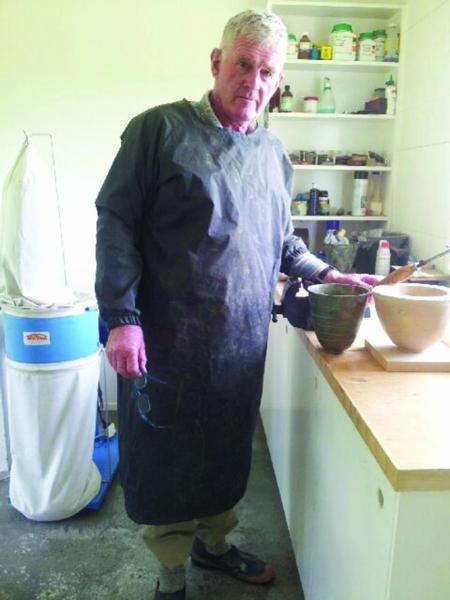There are gifts that give momentary pleasure, then there are those that just keep on giving. It turned out to be the latter for Dennis Handyside when his wife gave him a lathe for his 40th birthday. This launched him on a fascinating journey of shaping and decorating wood that he still finds immensely enjoyable 25 years later.
Dennis had an affinity with wood to start with, having been involved in forestry, and farming on the East West axis road near Lake Wairarapa. He is now retired from farming and living in a home he and wife Andree built on Dry River Road, near Martinborough.
Dennis found that the raw materials for woodturning were often right on his doorstep. His neighbour found swamp totara buried on his property - a wood that appeals for its dark colour and intriguing holes and grains. And a large eucalyptus branch that immediately looked distinctive just happened to be lying on his land when he moved into his new home. This gum tree yielded a huge amount of turned objects, including many on display currently at Aratoi. “It’s not that hard to find when you start looking into rivers and on riverbanks,” he says.
But whereas much New Zealand woodturning uses unadorned native wood for functional objects, Dennis uses both native and exotic woods, and incorporates colour into his bowls. His adds stunning inlay patterns really set his work apart, featuring ebony, purple heart (a Brazillian hard wood) and wood that he dyes himself.
Like everything about this ‘journey’, Dennis had to put in hours of experimentation to get the results he was looking for, holding New Zealand craftsman Paul Mason as the benchmark for the standard he wished to achieve. He discovered he could use fabric dye to colour the wood, with the wood being boiled in water to better absorb the dye. He discovered holly, a very pale wood, worked particularly well, and this is the wood used for the blue and green bowls in the exhibition.
The inlay pieces he applies to his bowls have to be cut to within ½ mm accuracy, so seasoning the wood properly – “as well as a good pair of glasses” - are essential. He also learnt how to prepare swamp totara using a warm wax product that replaces the water and stabilizes the wood so it can be turned.
“I have just kept experimenting over time. Some of the results were disastrous and some worked.”
With solo shows and group exhibitions under his belt, Dennis is now represented by Avid Gallery, Wellington and has certainly achieved the high standards he set himself when he first embarked on the woodturning journey.
Currently showing at Aratoi: 'New Work by Dennis Handyside', until 31 Jan; ‘Little Jewels’, until 14 Dec; 'Milan Mrkusich: Chromatic Investigations and Paintings from the 90s’, until 31 Jan; 'Ben Buchanan: FOREVER(S)’, until 31 Jan.

Dennis Handyside in his workshop.